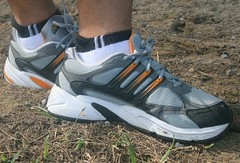- Testes: These are compact structures, each consists of hundreds of tiny sperm (seminiferous) tubules which produce sperms cells (male gametes). Apart from producing sperm cells, the testes also produce male sex hormone, testosterone.
- Scrotum: This is a pouch of skin containing the testes which are located outside the body at a temperature slightly lower than the body temperature which is an optimum temperature for sperm production.
- Epididymis: It stores sperms temporarily.
- Sperm duct (vas deferens): Carries sperms from the epididymis to the urethra during ejaculation.
- Prostate gland and seminal vesicles: Secrete seminal fluid which provides nourishment and oxygen to the sperms and also provides medium for the sperms to swim towards the oviduct in the female reproductive system. (Seminal fluid combines with the sperms to form semen)
- Urethra: To convey the semen out.
- Penis: To deposit semen into the vagina.
- Erectile tissue: Spongy tissue containing blood spaces and blood vessels. It causes erection during sexual intercourse.
- Ovaries: These are compact structures attached to the dorsal wall of the abdomen. Each consists of primary follicles (one develops into Graafian follicle containing mature ovum each month). The ovary also produces female sex hormones, oestrogen and progesterone.
- Oviduct: This is the site at which fertilization (fusion of the sperm nucleus with the ovum nucleus to form a zygote) takes place.
- Uterus: It receives, accomodates, nourishes and protects the embryo and foetus during pregnancy. Being muscular, it helps to expel the foetus out during birth.
- Cervix: This is the narrow region where uterus meets the vagina. It prevents infection from entering the uterus.
- Vagina: It receives the penis during sexual intercourse and at the end of pregnancy, it acts as a birth canal.



| SPERMS | OVA (EGG CELLS) |
|
|
|
|
|
|
|
|
|
|




